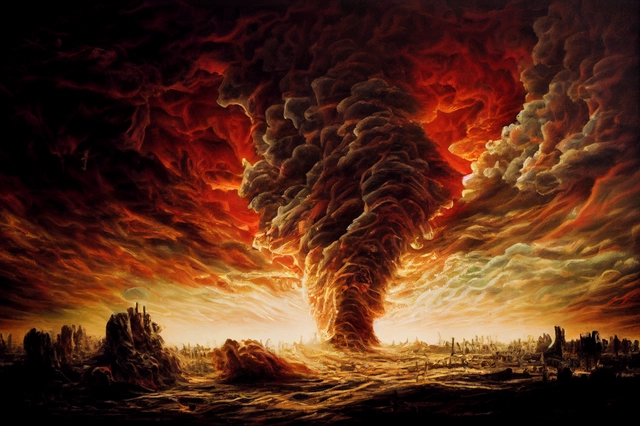
 Fahrenheit 451 by Ray Bradbury is a classic dystopian novel that explores the dangers of censorship and the suppression of knowledge and ideas. The book is a powerful critique of a society that values conformity over individuality and knowledge, and a warning about the dangers of suppressing free thought and expression.
Fahrenheit 451 by Ray Bradbury is a classic dystopian novel that explores the dangers of censorship and the suppression of knowledge and ideas. The book is a powerful critique of a society that values conformity over individuality and knowledge, and a warning about the dangers of suppressing free thought and expression.
The story takes place in a world where books are banned and firefighters are tasked with burning any that are found. The protagonist, Guy Montag, is a firefighter who begins to question the government’s control over information and knowledge, leading to a journey of self-discovery and resistance.
One of the standout features of Fahrenheit 451 is its vivid portrayal of a society where knowledge and ideas are suppressed. The book provides a frightening and convincing picture of a world where free thought and expression are suppressed, and where individuals are encouraged to conform and blindly accept the government’s control over information and knowledge. The book’s depiction of the government’s use of censorship and propaganda to maintain its power is particularly striking, and highlights the dangers of suppressing free speech and thought.
Another highlight of the book is its portrayal of the power of knowledge and the importance of free thought and expression. The book’s protagonist, Guy, is a complex and relatable character, who embodies the struggle for knowledge and freedom of thought in a world where these values are suppressed. The book’s portrayal of the power of knowledge and the importance of free thought and expression is a powerful reminder of the dangers of censorship and the need for free and open communication.
 The book also offers a powerful critique of conformity and the dangers of blindly accepting the government’s control over information and knowledge. Through its portrayal of a society where knowledge and ideas are suppressed, the book highlights the dangers of conformity and the importance of critical thinking and individuality.
The book also offers a powerful critique of conformity and the dangers of blindly accepting the government’s control over information and knowledge. Through its portrayal of a society where knowledge and ideas are suppressed, the book highlights the dangers of conformity and the importance of critical thinking and individuality.
The book’s use of imagery and symbolism is also a standout feature. The image of the fireman, who is traditionally seen as a symbol of protection, is used to symbolize the suppression of knowledge and ideas in the book. The book’s use of symbols and imagery adds depth and meaning to the story and provides a rich and immersive reading experience.
In conclusion, Fahrenheit 451 by Ray Bradbury is a classic dystopian novel that explores the dangers of censorship and the suppression of knowledge and ideas. The book is a powerful critique of a society that values conformity over individuality and knowledge, and a warning about the dangers of suppressing free thought and expression. Through its vivid portrayal of a society where knowledge and ideas are suppressed, its portrayal of the power of knowledge and the importance of free thought and expression, and its use of imagery and symbolism, the book offers a unique and thought-provoking exploration of the dangers of censorship and the importance of free speech and critical thinking.
“If you don’t want a man unhappy politically, don’t give him two sides to a question to worry him; give him one. Better yet, give him none.”
“If you don’t want a man unhappy morally, don’t give him two sides to a question to worry him; give him one. Better yet, give him none.”
“With the push of a button, you can destroy ideas.”
“We need not to be let alone. We need to be really bothered once in a while.”
“It’s not just that books are few and far between. It’s the fact that when you do run across one, it’s been changed so much that it’s barely recognizable.





































